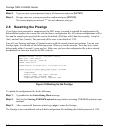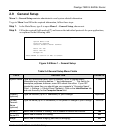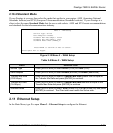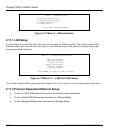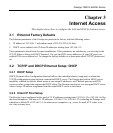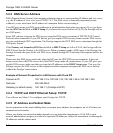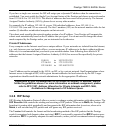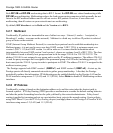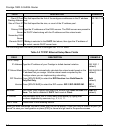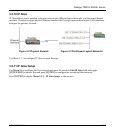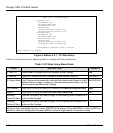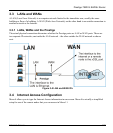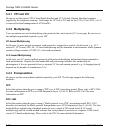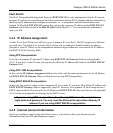
Prestige 782R G.SHDSL Router
3-4 Internet Access
Both RIP-2B and RIP-2M send routing data in RIP-2 format. But RIP-2B uses subnet broadcasting while
RIP-2M uses multicasting. Multicasting reduces the load on non-router computers which generally do not
listen to the RIP multicast address and so will not receive RIP packets. However, if one router uses
multicasting, then all routers on your network must use multicasting.
By default, RIP direction is set to Both and the Version set to RIP-1.
3.2.7 Multicast
Traditionally, IP packets are transmitted in one of either two ways - Unicast (1 sender – 1 recipient) or
Broadcast (1 sender – everyone on the network). Multicast is a third way to deliver IP packets to selected
group of hosts on the network.
IGMP (Internet Group Multicast Protocol) is a session-layer protocol used to establish membership in a
Multicast group - it is not used to carry user data. IGMP version 2 (RFC 2236) is an improvement over
version 1 (RFC 1112) but IGMP version 1 is still in wide use. For more detailed information about
interoperability between IGMP version 2 and version 1, please see sections 4 and 5 of RFC 2236. The class
D IP address is used to identify host groups and can be in the range 224.0.0.0 to 239.255.255.255. The
address 224.0.0.0 is not assigned to any group and is used by IP multicast computers. The address 224.0.0.1
is used for query messages and is assigned to the permanent group of all IP hosts (including gateways). All
hosts must join the 224.0.0.1 group in order to participate in IGMP. The address 224.0.0.2 is assigned to the
multicast routers group.
The Prestige supports both IGMP version 1 (IGMP-v1) and IGMP version 2 (IGMP-v2). At start up, the
Prestige queries all directly connected networks to gather group membership. After that, the Prestige
periodically updates this information. IP Multicasting can be enabled/disabled on the Prestige LAN and/or
WAN interfaces using menus 3.2 (LAN) and 11.3 (WAN). Select None to disable IP Multicasting on these
interfaces.
3.2.8 IP Policies
Traditionally, routing is based on the destination address only and the router takes the shortest path to
forward a packet. IP Policy Routing (IPPR) provides a mechanism to override the default routing behavior
and alter the packet forwarding based on the policy defined by the network administrator. Policy-based
routing is applied to incoming packets on a per interface basis, prior to the normal routing. Create policies
using SMT Menu 25 (see the IP Policy Routing chapter) and apply them on the Prestige LAN and/or WAN
interfaces using menus 3.2 (LAN) and 11.3 (WAN).



